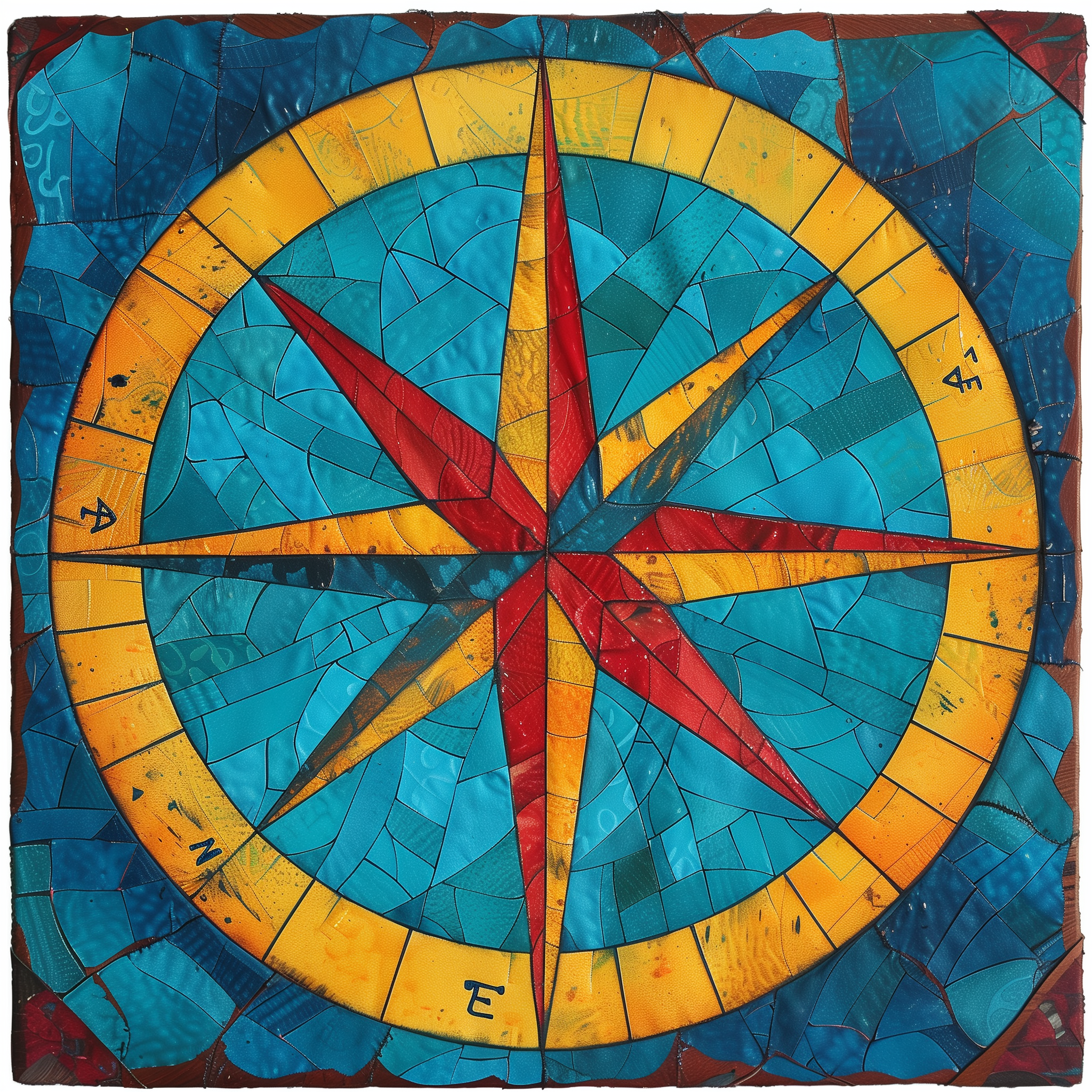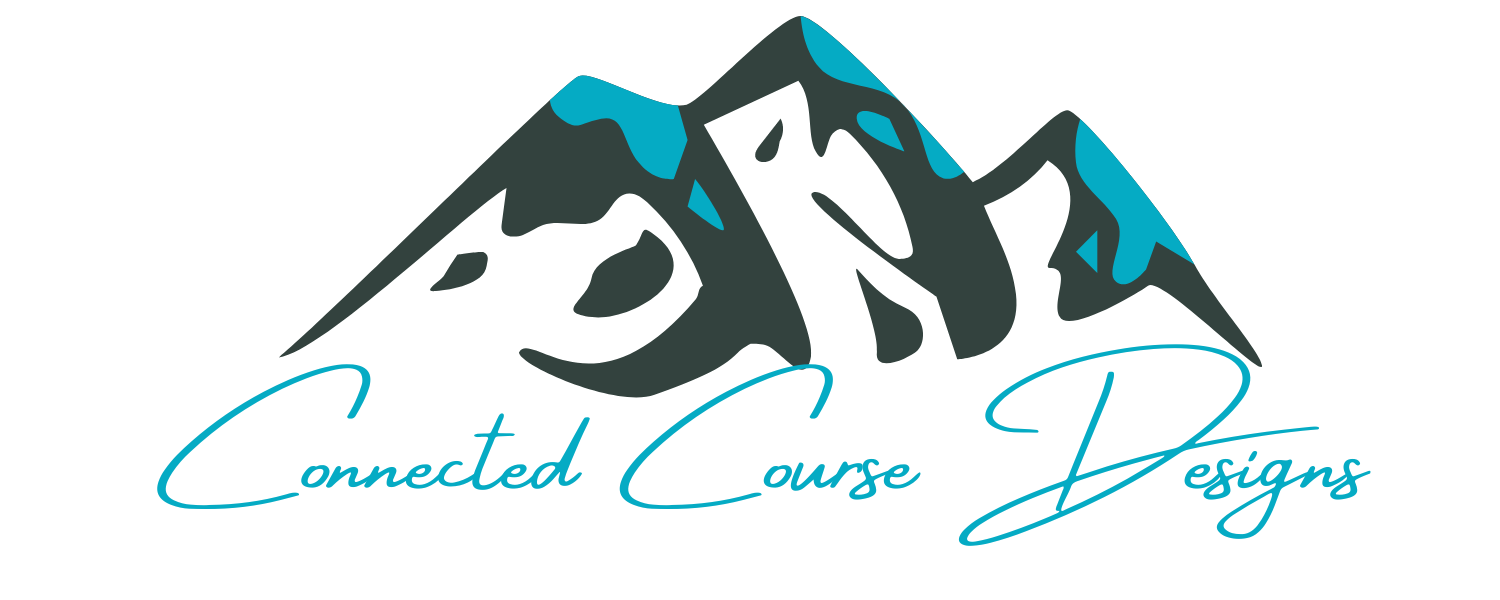
A compass design done in batik
My fellow online student unfolded a large piece of paper before me on a Zoom call to demonstrate how she was addressing the challenge of the course navigation for a program we were both in.
We had been commiserating about the difficulties of finding lessons and materials we needed to reference for ongoing activities we were involved in. She had taped together 8 pieces of white paper to get a large enough sheet of paper to map it all out.
These courses were part of an overly expensive program so the lesson stuck extra hard with me: Never make navigating an online course so problematic that your students must resort to making treasure maps out of taped pieces of printer paper to find their way!
Since a compass has four points to orient us by north, south, east, and west, let’s look at four ways you can ensure your learners don’t get lost in your course.
Clear Naming
Always give your lessons unique and descriptive titles. It is poor practice to use generic words like “lesson” or “module.”
Instead of just Lesson 1, Lesson 2, and Lesson 3, add context. If you were teaching how to do batik dying (a centuries-old Indonesian technique of dying fabric and using wax to resist the dye, making patterns on the entire fabric), you might have these as your first three lesson titles:
- Lesson 1: Choosing your Materials
- Lesson 2: Introduction to the Dye Process
- Lesson 3: The Resist Process
Notice you still want to use a numbering system so learners know the order of lessons.
Occasionally, you might teach something that doesn’t have to be completed in steps. In those cases, you could leave off the “Lesson #” part, letting learners choose which ones to do when; however, learners crave guidance. Even in that situation, they usually will ask, “Which one should I do first?” or “Which lesson is most important?” so giving them an order is still a good idea.
Consistency in Naming
Once you place a name on a lesson, activity, or reference document, stick to it. Always use that exact name when referring to it.
Remember, your learners are learning! They may not yet know that wax is used to create a resist in batiking so if you tell them to refer to the lesson on applying wax instead of the lesson on the resist process, they will get lost…and frustrated.
You care too much about your learners to let them be frustrated, so be vigilant about consistency of names.
When you have your course written out, you can do a search for the terms you have used to confirm they are all exactly the same. If you named the materials’ guide “Batik Materials Checklist” don’t refer to it as “The Batik Shopping List.” Your learners will be hopelessly searching for a non-existent shopping list and maybe thinking you didn’t include everything promised in the course.
Provide direction
This can get a little involved so I will be offering an entire course on it soon, but for now, you can think of it as the first step of the classic advice given to speakers, “Tell them what you are going to tell them, tell them, then tell them what you told them.”
Clearly let the learners know what is in each lesson. If Lesson 3: The Resist Process has four parts, state that at the beginning of the lesson with clear descriptions and sub-titles.
You might present it this way:
This lesson covers these four steps of the resist process:
- What a resist is
- How wax work as a resist
- How to apply the resist
- When to remove the resist
Also let the learner know what kinds of materials are in the lesson. When course elements are not identified by format, students can get lost looking for a PDF when that course resource is an image or video. List the format of each element. Provide the length – time for video and audio and pages for documents.
A batik lesson might have a video for each step as well as a single written guide, which might look like this:
This lesson covers these four steps of the resist process with four videos and a PDF guide:
- What a resist is (video: 3 mins)
- How wax work as a resist (video: 5 mins)
- How to apply the resist (video: 10 mins)
- When to remove the resist (video: 2 mins)
- Guide to Resist (PDF: 10 pages with images)
Show progress
Ideally, best practice is to use a learning platform that includes a progress bar or circle animation.
So, if the batik course only had these 4 lessons, once students complete Lesson 1, 25% of the progress bar or circle would auto-fill. (Not all learning platforms offer this; if yours does not, keep reading. I tell you how to work around that.)
Research shows that students are far more likely to persist with a course that has an element that visually completes as they work through a course. The human brain likes the idea of completing the task of seeing an entire circle or bar filled, and it motivates learners to stay with the content until its complete.
Also, when you provide the direction and elements, students can survey that all together and know that it should take them less than a half hour to view all the videos.
Have you ever pulled up a video and it didn’t have a timestamp, so you didn’t know if it was going to last 5 minutes or 30? That is the worst kind of lesson torture!
If your platform doesn’t have the visual progress bar or circle option, you can still achieve this with written progress statements such as: “Now that you know what a resist is, let’s look at the second part of this four-part lesson: how wax works as a resist.” Or, “You just have one more lesson covering when to remove the resist, and you’ll be ready to move on to Lesson 4: Practice with Batik Wax.” In fact, I encourage you to include these kinds of statements along with a progress animation element (if available).
Navigation experiences
We have reached the summit of this post. Thank you for taking this journey with me and not getting lost along the way.
I would love to hear what experiences with both good and poor navigation you’ve had as an online learner yourself.

